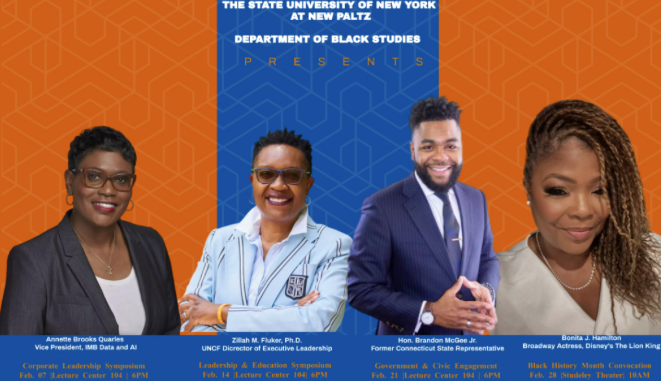
Each February, the United States celebrates Black History Month, a national commemoration of the contributions and achievements that Black peoples have made throughout the history of this country.
The story of Black History Month began in 1915, when Carter G Woodson, an alumnus of the University of Chicago, met at the Wabash YMCA with A. L. Jackson and three others to form the Association for the Study of Negro Life and History (ASNLH). From there, Woodson and his colleagues urged Black civic organizations to promote the achievements Black researchers were uncovering. As he told an audience of Hampton Institute students, “we are going back to that beautiful history and it is going to inspire us to greater achievements.” A press release was sent out announcing Negro History Week in Feb. 1926.
Woodson chose February for the reasons of traditions and reform–to encompass the birthdays of two great Americans who played a prominent role in shaping Black history: Abraham Lincoln and Frederick Douglass, whose birthdays are the 12th and 14th, respectively. He was also well-aware of pre-existing celebrations, including the Black and Republican communities honoring the fallen president’s birthday following his assassination in 1865 and since the late 1890s, Black communities celebrating Douglass’. He then built Negro History Week around these traditional days of commemorating the Black past. He was asking the public to extend their study of Black history, not to create a new tradition.
By the late 1960s, as young Black students on college campuses became increasingly conscious of their links with Africa, Black History Month replaced Negro History Week at a quickening pace. In 1976, 50 years after the first celebration, ASNLH used its influence to officially institutionalize the shifts from a week to month, and from Negro History to Black History. Ten years later, the U.S. Congress, in a joint resolution of the House and Senate, designated February as National Black History Month. The resolution authorized and requested President Ronald Reagan to issue the Presidential Proclamation 5443 in observance, which noted that “the foremost purpose of Black History Month is to make all Americans aware of this struggle for freedom and equal opportunity.” Since then, every American president has issued proclamations endorsing the ASNLH’s annual theme.
In celebration of Black History Month 2024, the Black History Month Steering Committee at SUNY New Paltz announced a series of academic and social programs. This interdisciplinary series is organized around the theme “Heritage and Horizons: Embracing the Essence of Blackness and Being,” and presented in collaboration with Zillah M. Fluker, Ph.D., co-founder of the non-profit Why Not Win Institute.
“The series aims to elevate the Black History Month experience at New Paltz through a series of events featuring guest experts addressing the theme as it relates to business, government relations, education, arts and culture,” said Shelton Johnson, assistant professor of Black Studies and Black History Month Steering Committee chair. “Through engaging events, participants will be empowered to embrace the essence of Blackness, fostering a sense of pride, unity and inspiration across the campus community.”
The headlining events include a Corporate Leadership Symposium, led by the Vice President at IBM Z Data and AI, Annette Brooks Quarles, MBA, on Feb. 7 in the Lecture Center. Over the course of more than two decades at the company, Quarles has held various leadership and management positions of increasing responsibility in systems test, development, client support and strategic planning for the enterprise systems. The SUNY New Paltz community had the opportunity to learn from her about successful Black leaders in the corporate sector and gain insights into professional development strategies in career advancement, connecting corporate practices with the evolving landscape of higher education.
Zillah Fluker, Ph.D., Director of Executive Leadership and Executive Director at the Why Not Win Institute and a 17-year leader in corporate America and high education, hosted a Leadership and Education Symposium on Feb. 14 in the Lecture Center. The interactive workshop was designed to help participants understand the importance of personal accountability in academic and professional success, develop strategies for effective engagement in educational pursuits and explore the role of diversity and inclusion in creating a vibrant and inclusive learning environment.
On Feb. 21, at 6 p.m. in the Lecture Center, Hon. Brandon L. McGee, Jr., a former Connecticut State Representative (2013-2022), led a Government and Civic Engagement Panel aimed at helping attendees better recognize the importance of Black representation in government and leadership roles and explore their own avenues for active civic engagement and participation.
The “Grand Convocation” closing the Black History Month 2024 celebration at New Paltz will be led by Bonita J Hamilton. She is a highly decorated actress, singer, voice over artist and speaker, with nearly two decades’ experience on Broadway, including her role as Shenzi the Hyena in the Tony award-winning musical “The Lion King.” This final celebration of the rich heritage of Black culture through artistic expressions which will help foster a sense of unity and pride and inspire creativity and innovation through cultural appreciation, will take place on Wed., Feb. 28, at 10 a.m. in Studley Theatre.
SUNY New Paltz’s series, and Black History Month in general, provides a space to honor powerful, historically oppressed moments and people. However, Black history isn’t confined to the month of February. Black history is featured in television documentaries and in local and national museums. It is conveyed through literature, the visual arts and music. The great lives and material culture of Black history can be seen in national park sites and in the preservation of historic homes, buildings and even cemeteries. Black History Month is not a token. It is a special tribute–a time of acknowledgement, reflection and inspiration–which comes to life in real and ongoing activities throughout the year.
